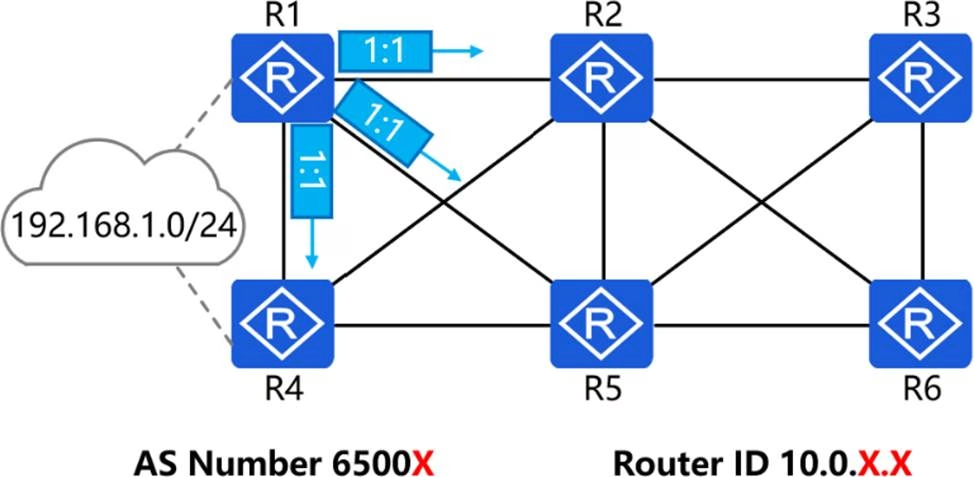In the network shown in the figure, adjacent routers use directly connected interfaces to establish EBGP neighbor relationships. The Router ID of each device is 10.0.XX, and the AS number is 6500X, where X is the router number. R1 and R4 both have static routes to 192.168.1.0/24, which are imported into BGP. R1 adds the Community attribute value (1:1) when sending routes to its neighbors. All routers in the network are enabled to pass community attributes. R3 is configured with a routing policy that refuses to receive routes with a community attribute value of 1:1. Which of the following is the traffic path for R3 to reach 192.168.1.0/24?
In the network shown in the figure, adjacent routers use directly connected interfaces to establish EBGP neighbor relationships. The Router ID of each device is 10.0.XX, and the AS number is 6500X, where X is the router number. R1 and R4 both have static routes to 192.168.1.0/24, which are imported into BGP. R1 adds the Community attribute value (1:1) when sending routes to its neighbors. All routers in the network are enabled to pass community attributes. R3 is configured with a routing policy that refuses to receive routes with a community attribute value of 1:1. Which of the following is the traffic path for R3 to reach 192.168.1.0/24?

A . R3-R5-R1
B . R3-R2-R4
C . R3 has no route to 192.168.1.0/24
D . R3-R2-R1
Answer: C
Latest H12-831_V1.0-ENU Dumps Valid Version with 231 Q&As
Latest And Valid Q&A | Instant Download | Once Fail, Full Refund

